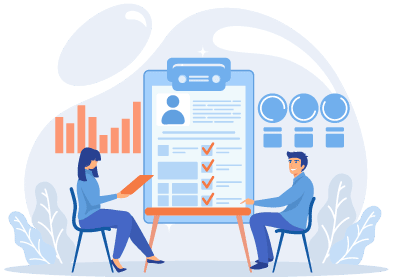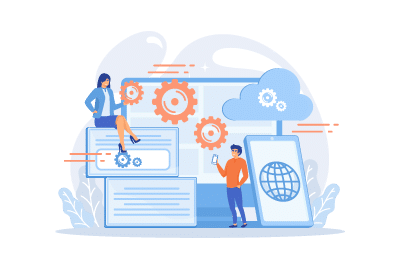Digital Transformation Readiness Assessment
A digital transformation readiness assessment helps business leaders determine a starting point for building a DX roadmap.
Table of Content
Digital transformation is an org-wide effort involving many people, processes, and moving parts.
All these different elements must come together in exactly the right way to deliver the results you’re looking for. Without a plan, it’s impossible to allocate resources, establish timelines, or measure progress toward big DX goals — and as a result, initiatives fail.
But, even the planning process requires a good amount of preparation. You’ll want to ensure that your big-picture DX vision has purpose and direction. And, that your organization has what it takes to see things all the way through.
A digital transformation readiness assessment helps business leaders do exactly that. It gives you a starting point for building a DX roadmap by identifying gaps in your strategy and the specific actions you need to take before moving forward.
A digital transformation readiness assessment is a comprehensive analysis of your org’s current state to determine whether you’re ready to embark on a digital transformation journey.
Done right, a readiness assessment identifies what specific actions you need to take to build a strong foundation for reaching critical transformation goals.
Here, the aim is twofold. First, it’s identifying barriers and gaps that must be addressed before plans can move forward. And second, it’s establishing a baseline you can use to start building your DX roadmap.
The process typically centers on three core dimensions: people, processes, and technologies – looking at factors like available resources, operating models, data maturity, and culture, among other criteria.
In these next few sections, we’ll go over some of the questions you might find on a typical readiness assessment.

One of the primary goals of a DX readiness assessment is understanding what it’s going to take to ensure that the transformation produces meaningful value for the business.
So much of digital transformation is about people — culture, organizational structure, individual and team capabilities, cross-functional collaboration, and so on
It demands a collective mindset shift that’s often harder to pull off than some of the more technical aspects of transformation.
Understanding how core business processes are working is another key part of the readiness assessment.
Relying on analog, manual processes versus digitized, automated ones often determine whether your org is ready to transform or needs to deal with a few things first. Processes are also central when it comes to eliminating inefficiencies, mitigating risk, enforcing governance policies, and more.
Not every transformation initiative requires you to reengineer every single business process. But, more often than not, you’ll need to adjust or replace existing processes and workflows – especially if you’ve been using them for years and/or your DX project involves replacing legacy solutions.
That said, the main goal here is ensuring that you’re starting from a solid foundation — with well-designed processes, end-to-end visibility, and standardized system for measuring success.
Here, you’re trying to answer the following questions:
 The last piece of this puzzle is technology.
The last piece of this puzzle is technology.
Once you’ve determined that your people and processes are ready to transform, it’s time to take a closer look at your tech.
Technology is the enabler that makes it possible to automate processes, enforce governance, scale production, and so on. But readiness can only be defined in context with DX goals and tech maturity level.
Past initiatives like ERP implementations or cloud migrations make it possible to reap the benefits of more advanced initiatives. For example, you can’t take advantage of digital twins or the IoT unless you’re already working with a unified system with tight integration across the entire enterprise.
Broadly speaking, you’re trying to determine whether your existing technology can support your digital transformation plans. And, if the answer is “no,” then what needs to be retired, repaired, or replaced in order to move things forward?
Organizations must also ensure that they have a system and standards for evaluating digital technologies and testing potential investments under a variety of conditions to determine whether they are capable of meeting new needs.
All that in mind, here are some questions you might ask yourself at this phase in the assessment:
We should also mention that there are some signs that may indicate you need to go back to the drawing board before your DX plans can move forward.
In those instances, it’s not worth running through the assessment just yet. (In that case, you’ll want to evaluate your strategy and figure out how to address these issues before it even makes sense to start making serious DX plans.
A few things to watch out for:
Before embarking on any transformation journey, you need to be certain that you’re fully prepared to see this thing through.
A digital transformation readiness assessment can help your organization map out a path to success and avoid common pitfalls.
While a digital readiness assessment can’t guarantee DX success by itself, it is, however, a powerful tool that can help you lay the groundwork for success.
Working with a partner like Velosio can help you determine if you’re ready to take on this challenge and ensure that you focus on the right things and don’t overlook any important steps.
But more importantly, we’ll help you figure out what happens next. Contact us today to book an initial consultation or chat with one of our digital transformation experts to learn more.
Talk to us about how Velosio can help you realize business value faster with end-to-end solutions and cloud services.
"*" indicates required fields